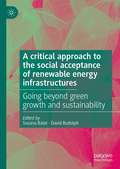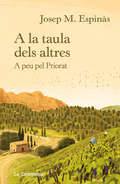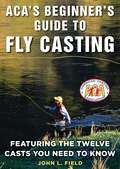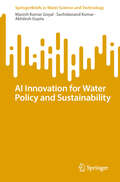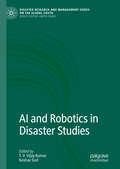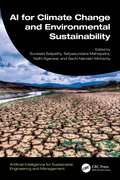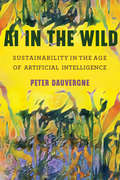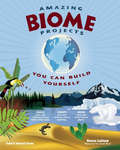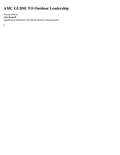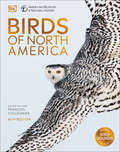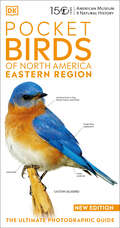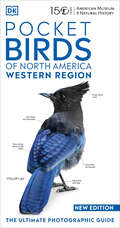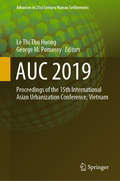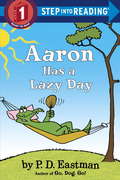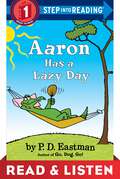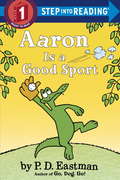- Table View
- List View
A critical approach to the social acceptance of renewable energy infrastructures: Going beyond green growth and sustainability
by Susana Batel David RudolphThis book provides a critical approach to research on the social acceptance of renewable energy infrastructures and on energy transitions in general by questioning prevalent principles and proposing specific research pathways and lines of inquiry that look beyond depoliticised, business-as-usual discourses and research agendas on green growth and sustainability. It brings together authors from different socio-geographical and disciplinary backgrounds within the social sciences to reflect upon, discuss and advance what we propose to be five cornerstones of a critical approach: overcoming individualism and socio-cognitivism; repoliticisations – recognising and articulating power relations; for interdisciplinarity; interventions – praxis and political engagement with research; and overcoming localism and spatial determinism: As such, this book offers academics, students and practitioners alike a comprehensive perspective of what it means to be critical when inquiring into the social acceptance of renewable energy and associated infrastructures.
A la taula dels altres: A peu pel Priorat
by Josep Maria EspinàsEspinàs comparteix l'experiència de caminar per un Priorat en temps de verema, amb costums i personatges que avui semblen inventats. El 1957 Josep M. Espinàs va conèixer un Priorat del qual, amb l'excepció del vi, se'n tenien molt poques notícies, en una època en què encara es traginava el raïm en rucs i s'anava a buscar l'aigua a la font amb àmfores. En el llibre A la taula dels altres, l'escriptor camina per aquesta comarca durant la verema i passeja per uns pobles on un foraster és una raresa. Espinàs esmorza i conversa amb la gent que troba a les vinyes i coneix una sèrie de personatges curiosos que, a través de la mirada de l'escriptor, hi apareixen molt ben retratats. El que era una crònica de viatge, fidel a la realitat, ara s'ha convertit en una narració que reviu un món que forma part del nostre passat.
A to Z Mysteries Super Edition #11: Grand Canyon Grab (A to Z Mysteries #11)
by Ron RoyDink, Josh, and Ruth Rose get to the bottom of the Grand Canyon--and a mystery--in the eleventh A to Z Mysteries Super Edition!Dink, Josh, and Ruth Rose are visiting the Grand Canyon when they spot Parker Stone--a famous TV star. They can't wait to get his autograph, but before they can, Parker is kidnapped! Only a few clues--and his pet parrot--are left behind. It's up to Dink, Josh, and Ruth Rose to find Parker--before it's too late!Help Dink, Josh, and Ruth Rose solve mysteries from A to Z! From The Absent Author to The Zombie Zone, there's a mystery for every letter of the alphabet, plus super editions with even more A to Z fun. And don't miss Ron Roy's series for younger readers, Calendar Mysteries!
ABC 3-D Tumbling Blocks . . . and More!: Strip-Pieced Really!
by Marci BakerEveryone can succeed in 3-D! All patterns are strip-pieced... REALLY! No set-in (Y) seams. • Learn the secrets to easily select fabric values to achieve dazzling 3-D designs • Illustrated to guide you through each step of the project • Be inspired by full color photos, alternate color-ways, and various layouts Includes 16 projects, twelve using Marci Baker's strip-pieced method from Not Your Grandmother's Tumbling Blocks and several updated designs from Sara Nephew's most popular book, Big Book of Building Block Quilts, including Hollow Cube, Honeycomb Waffle, Downtown, and Space Crystal. Be inspired to explore the world of 3-D with the full-color photos and step-by-step illustrations.
ABC Science Book (STEAM Baby for Infants and Toddlers)
by Anjali JoshiABC learning through the power of S.T.E.A.M. for ages 0 to 3Give your little scientist a jump-start with this fun, inspiring way to master their ABCs. From astronaut to zoologist, ABC Science Book introduces young children, up to age 3, to basic scientific concepts and careers with each letter of the alphabet.This S.T.E.A.M.-themed ABC book for kids features:Levels of discovery—Explore a tiered learning approach that grows with your child; focus first on letters, then on words, and then on understanding concepts.Colorful images—Rich and vibrant illustrations add to the learning and keep your child engaged.Full S.T.E.A.M. ahead—Encourage a lifelong love of learning with all the books in the S.T.E.A.M. Baby series.ABC Science Book makes learning the alphabet a fun, exciting adventure for any toddler.
ACA's Beginner's Guide to Fly Casting: Featuring the Twelve Casts You Need to Know
by John L. FieldIn The ACA's Beginner's Guide to Fly Casting: Featuring the Twelve Casts You Need to Know, John Field, tournament caster and FFI Master Casting Instructor, teaches and explains the fundamentals of fly casting, step by step. John shares the casting games of the American Casting Association and its 110 years of proven methods. This guide also includes learning tips from champion casters Steve Rajeff and Chris Korich. To begin, Field carefully lays out the essentials for getting ready, like assembling an outfit, and caring for your tackle. Next, he shows the simplest but most efficient way to start casting and practicing for results. Once you can make the basic cast, the next chapters provide the steps to achieve casting accuracy and distance. Whether learning to fly fish in fresh or saltwater, Field's expertise is sure to have you casting like a pro before you know it. With expert instructions, accompanying diagrams and fun drills, The ACA's Beginner's Guide to Fly Casting will help the next generation of flyfishers participate in this wonderful sport.
AI Innovation for Water Policy and Sustainability (SpringerBriefs in Water Science and Technology)
by Manish Kumar Goyal Akhilesh Gupta Sachidanand KumarIn the face of unprecedented challenges in managing water resources, the integration of artificial intelligence (AI) emerges as a revolutionary force, reshaping the landscape of water conservation, treatment, irrigation, policy formulation, watershed management, and the monitoring of groundwater and surface water. This book explores the transformative role of AI in the water domain, exploring cutting-edge applications and innovative solutions that promise to address pressing issues in sustainable water management. As we navigate the complexities of a changing climate, population growth, and urbanization, the chapters within this book offer insights into how AI technologies can enhance efficiency, optimize resource utilization, and provide data-driven strategies for ensuring the resilience and sustainability of our vital water ecosystems. From intelligent water treatment systems to precision agriculture and policy decision support, each chapter unfolds a narrative of AI-driven advancements, providing a comprehensive guide for researchers, practitioners, and policymakers navigating the intersection of artificial intelligence and water management.
AI and Robotics in Disaster Studies (Disaster Research and Management Series on the Global South)
by T. V. Vijay Kumar Keshav SudThis book promotes a meaningful and appropriate dialogue and cross-disciplinary partnerships on Artificial Intelligence (AI) in governance and disaster management. The frequency and the cost of losses and damages due to disasters are rising every year. From wildfires to tsunamis, drought to hurricanes, floods to landslides combined with chemical, nuclear and biological disasters of epidemic proportions has increased human vulnerability and ecosystem sustainability. Life is not as it used to be and governance to manage disasters cannot be a business as usual. The quantum and proportion of responsibilities with the emergency services has increased many times to strain them beyond their human capacities. Its time that the struggling disaster management services get supported and facilitated by new technology of combining Artificial Intelligence (AI) and Machine Learning (ML) with Data Analytics Technologies (DAT)to serve people and government in disaster management. AI and ML have advanced to a state where they could be utilized for many operations in disaster risk reduction. Even though many disasters cannot be prevented and a number of them are blind natural disasters yet through an appropriate application of AI and ML quick predictions, vulnerability identification and classification of relief and rescue operations could be achieved.
AI for Climate Change and Environmental Sustainability (Artificial Intelligence for Sustainable Engineering and Management)
by Suneeta Satpathy Sachi Nandan Mohanty Satyasundara Mahapatra Nidhi AgarwalThis book discusses the adverse effects of climatic changes on our planet. It examines AI-based tools and technologies and how they can assist in identifying energy emission reductions, CO2 removal, and support the development of greener transportation networks, monitoring deforestation, and forecasting extreme weather events.AI for Climate Change and Environmental Sustainability identifies and discusses in detail the importance of environmental sustainability based on accomplishment of the UN's 17 Sustainable Developmental Goals (SDGs). It presents the various AI-based possibilities for accelerating international efforts to safeguard the environment and conserve natural resources. The authors offer a comprehensive analysis of the emerging field of climate change in relation to Internet of Things, artificial intelligence, machine learning, and deep learning. The book discusses AI developments, applications, and best practices that will help us transition to a low-carbon future on both a regional and global scale. It provides case studies with analytical results pertinent to climate change and weather prediction and includes chapters with a research-oriented approach, which can encourage new developments in the field of sustainable climate and green environment.The book can be used as a primary textbook for graduate and postgraduate students in technology and science, as well as a reference for researchers, academics, and IT professionals working on climate change and sustainability initiatives.
AI in the Wild: Sustainability in the Age of Artificial Intelligence (One Planet)
by Peter DauvergneExamining the potential benefits and risks of using artificial intelligence to advance global sustainability.Drones with night vision are tracking elephant and rhino poachers in African wildlife parks and sanctuaries; smart submersibles are saving coral from carnivorous starfish on Australia's Great Barrier Reef; recycled cell phones alert Brazilian forest rangers to the sound of illegal logging. The tools of artificial intelligence are being increasingly deployed in the battle for global sustainability. And yet, warns Peter Dauvergne, we should be cautious in declaring AI the planet's savior. In AI in the Wild, Dauvergne avoids the AI industry-powered hype and offers a critical view, exploring both the potential benefits and risks of using artificial intelligence to advance global sustainability.
AKA (Sheridan House Ser.)
by Tristan JonesIn a last-ditch stab at fortune and glory, middle-aged adventurer Bill Conan enters a 30,000-mile single-handed round-the-world race. This ultimate test of skill, strength, and endurance leads him across the treacherous Atlantic Ocean's vast expanse, where a sudden change in wind throws him off balance and sends him overboard. Alone in the still, open sea, he struggles to keep from drowning, knowing it is a fight that he will eventually lose. But Conan has stumbled into the migratory path of a bottle-nosed dolphin named Aka and his tribe. In an exhilarating encounter, he senses Conan's plight, communicates with him, and works to keep him afloat and alive. A stirring adventure tale, Aka depicts the ancient history of dolphins, their extraordinary traits and abilities, and their eternal friendship with humans.
AMAZING BIOME PROJECTS
by Donna Latham Farah RizviAmazing Biome Projects You Can Build Yourself takes kids ages 9 and up on a circumnavigation of the globe to learn about Earth's terrestrial and aquatic biomes. Kid's will wander through forests, sizzle in deserts, shiver in the tundra, plunge beneath the seas to explore coral reefs, and slog through marshy waters. Along the way, kids will encounter flora and fauna adapted for survival in each unique climate zone. They'll learn about gnarly krumholz trees, bioluminescent sea creatures, camouflage, carnivorous plants, and blubbery marine critters. In each biome, people who use science in their jobs are highlighted, whether at the site of a disastrous oil spill or an oh-so-cool mastodon dig.
AMC Guide To Outdoor Leadership
by Alex KosseffThis completely revised and updated handbook details the critical skills and concepts every professional or volunteer outdoors leader needs to know. Building on the basic foundations of leadership, case studies, and his own extensive leadership experience, Alex Kosseff explores such topics as effective decision-making, group dynamics, risk management, self-awareness and evaluation, conservation, and more. Also included is a new chapter on techniques for leading and motivating youth. <P><P> Comprehensive, readable, and packed with practical advice and real-life experiences, AMC Guide to Outdoor Leadership, 2nd edition is a must-read for anyone committed to becoming a safe and effective outdoors leader.
AMC Guide to Outdoor Leadership: Trip Planning Promoting Diversity, Equity, and Inclusion Group Dynamics Decision-making Leading Youth Risk Management
by Alex Kosseff Sally ManikianThis completely revised and updated handbook details the critical skills and concepts every professional or volunteer outdoors leader needs to know. Author Sally Manikian worked in tandem with AMC's outdoor leaders and educators to bring make this book an authoritative exploration of such topics as effective decision-making, group dynamics, risk management, self-awareness and evaluation, conservation, and more. The outdoors belongs to all of us, and with that in mind, this new edition of AMC Guide to Outdoor Leadership puts a strong focus on diversity, equity, and inclusion. <P><P> Comprehensive, timely, and packed with practical advice and stories of real-life experiences, AMC Guide to Outdoor Leadership, 3rd Edition is a must-read for anyone committed to becoming a safe and effective outdoors leader.
AMNH Birds of North America (DK North American Bird Guides)
by DKThe ultimate photographic guide to more than 650 species of bird found in North America.Ideal for the armchair bird enthusiast or dedicated bird-watcher, this beautiful bird-watching book includes stunning full-color photographs of over 650 birds, revealing each species with unrivaled clarity. A lavish introduction describes bird characteristics and behavior, while stunning full-color photographs reveal individual species for easy identification. The 550 most commonly seen birds are pictured in clear, close-up photographs, with images of similar birds provided to make differentiation easy, from game birds and waterfowl to shorebirds and swifts to owls, hummingbirds, finches, and so many more. Soar into the pages of this brilliant bird book to explore: - 650 birds species found in the United States and Canada- Bird profiles feature information on social behavior, nesting & feeding habits, and flight patterns. - Full-color photographs show the adult bird in typical plumage, with male/female, juvenile, and seasonal variations- Color-coded maps highlight resident and migratory distributions to help spotters discover which species to expect when and where-Includes bird sound audio app for mobile phone use- Produced in association with the American Museum of Natural History, one of the world&’s leading authorities on ornithologyDiscover which species to expect when and where with up-to-date, color-coded maps highlighting habitation and migratory patterns. The most commonly seen species are given a whole page in the species catalog and each full-page profile includes images of plumage variations, subspecies, information on similar birds, and artworks of the bird in flight that reveal their outstretched wings. Rare birds and vagrants who occasionally stray into North America are also described. With easy-to-read accessible information provided throughout, accompanied by beautifully large illustrations, AMNH Birds of North America is a must-have book for bird-watchers of all ages and experiences, and doubling up as the perfect bird-watching gift for the budder birder in your life.
AMNH Pocket Birds of North America Eastern Region
by DKThe ultimate pocket-sized guide to more than 300 feathered residents of North America&’s Eastern Region. Whether you are a budding bird-watcher hoping to find species in woodland or someone curious about the feathered visitors in your own backyard, find out everything there is to know about your favorite feathered friends, with this pocket-sized guide to many of the birds found in North America&’s Eastern Region.Compact and easy-to-use, this stunning field guide is perfect for any bird and birding enthusiast, regardless of age or level of experience. High-quality photographs bring the bird species most commonly seen west of the Great Plains to life on the page, capturing their beauty and making identification quick and effortless. Significant differences in plumage variation between juvenile and adult, male and female, and winter and summer are clearly pictured.Soar into the pages of this beloved book on birds to discover:- Detailed bird profiles include information on behavior, habits, and flight patterns to ensure accurate identification.- Covers 370 species commonly seen in the Eestern region of North America.- Full-color photographs show the adult bird in typical plumage, with male/female, juvenile, and seasonal variations included as appropriate.- Detailed illustrations show typical plumage and posture in flight.- Maps accurately locate where the bird can be seen in summer, in winter, all year round, and on migration.- Includes free access to audio recordings of bird songs and calls to aid identification. Ideal for the dedicated bird-watcher, this beautiful bird-watching book includes stunning full-color photographs of over birds, revealing each species with unrivaled clarity. The reference pages pack in more data with lists of record breakers and endangered species, as well as many other fun facts. The Pocket Genius series is perfect for all children, whether they are learning about birds or are amateur bird spotters already! Produced in collaboration with the American Museum of Natural History, Pocket Birds of North America Eastern Region is an essential field guide for identifying birds in North America.
AMNH Pocket Birds of North America Western Region
by DKThe ultimate pocket-sized guide to more than 400 feathered residents of North America&’s Western Region. Whether you are a budding bird-watcher hoping to find species in woodland or someone curious about the feathered visitors in your own backyard, find out everything there is to know about your favorite feathered friends, with this pocket-sized guide to many of the birds found in North America&’s Western Region.Compact and easy-to-use, this stunning field guide is perfect for any bird and birding enthusiast, regardless of age or level of experience. High-quality photographs bring the bird species most commonly seen west of the Great Plains to life on the page, capturing their beauty and making identification quick and effortless. Significant differences in plumage variation between juvenile and adult, male and female, and winter and summer are clearly pictured.Soar into the pages of this beloved book on birds to discover: - Detailed bird profiles include information on behavior, habits, and flight patterns to ensure accurate identification.- Covers 420 species commonly seen in the western region of North America.- Full-color photographs show the adult bird in typical plumage, with male/female, juvenile, and seasonal variations included as appropriate.- Detailed illustrations show typical plumage and posture in flight.- Maps accurately locate where the bird can be seen in summer, in winter, all year round, and on migration.- Includes free access to audio recordings of bird songs and calls to aid identification.Ideal for the dedicated bird-watcher, this beautiful bird-watching book includes stunning full-color photographs of over birds, revealing each species with unrivaled clarity. The reference pages pack in more data with lists of record breakers and endangered species, as well as many other fun facts. The Pocket Genius series is perfect for all children, whether they are learning about birds or are amateur bird spotters already! Produced in collaboration with the American Museum of Natural History, Pocket Birds of North America Western Region is an essential field guide for identifying birds in North America.
AUC 2019: Proceedings of the 15th International Asian Urbanization Conference, Vietnam (Advances in 21st Century Human Settlements)
by George M. Pomeroy Le Thi Thu HuongThis book presents selected articles from the 15th International Asian Urbanization Conference, held in Ho Chi Minh City, Vietnam, on November 27-30, 2019. Bringing together researchers and professionals in the area of urban planning and development to better understand the growing need for sustainable urban life, it covers topics such as climate change and urban resilience; inclusive and implementable urban governance; smart and green mobility; transformations in land management; livable and smart cities; integrated planning and development; urban slums and affordable housing; sustainable urban finance; and urban renewal and redevelopment.
Aani and the Tree Huggers
by Jeannine AtkinsA village girl in India inspires the women around her to save their beloved forest.One day Aani is resting against her favorite tree when she hears the unfamiliar roar of trucks. She alerts the village women, the eldest of whom says the sounds are made by men from the city who have come to cut down the trees. The women explain to the cutters that their trees provide the villagers with food and fuel; are home to animals; and prevent erosion. But the men are heedless. As the cutters move closer, Aani acts with quiet, instinctive heroism to save not only her special tree, but also the village's beloved forest. Based on a true event in northern India, Aani and the Tree Huggers presents an enduring message of environmental action. In their picture book debuts, author Jeannine Atkins and artist Venantius J. Pinto introduce a memorable heroine whose love of the earth is sure to be an inspiration to children everywhere.
Aaron Has a Lazy Day (Step into Reading)
by P. D. EastmanP. D. Eastman's classic character Aaron the Alligator makes his early-reader debut! On this lazy day, Aaron is hot, tired, and hungry--perhaps a nice, juicy lemon will taste good? Blech! Lemons are not good to eat! Follow daffy Aaron as his hazy, lazy day becomes less lazy and more crazy! Young readers will giggle along as they tackle the simple words and sentences all on their own. Aaron the Alligator is a star of The Cat in the Hat Beginner Book Dictionary and a long-out-of-print series called Everything Happens to Aaron. Step 1 Readers feature big type and easy words for children who know the alphabet and are eager to begin reading. Rhyme and rhythmic text paired with picture clues help children decode the story.
Aaron Has a Lazy Day: Read & Listen Edition (Step into Reading)
by P.D. EastmanP. D. Eastman&’s classic character Aaron the Alligator makes his early-reader debut! On this lazy day, Aaron is hot, tired, and hungry—perhaps a nice, juicy lemon will taste good? Blech! Lemons are not good to eat! Follow daffy Aaron as his hazy, lazy day becomes less lazy and more crazy! Young readers will giggle along as they tackle the simple words and sentences all on their own. Aaron the Alligator is a star of The Cat in the Hat Beginner Book Dictionary and a long-out-of-print series called Everything Happens to Aaron. Step 1 Readers feature big type and easy words for children who know the alphabet and are eager to begin reading. Rhyme and rhythmic text paired with picture clues help children decode the story.This Read & Listen edition contains audio narration.
Aaron Loves Apples and Pumpkins (Step into Reading)
by P. D. EastmanIt's autumn in this Step 1 Step into Reading early reader by P. D. Eastman, author of Go, Dog. Go! and Are You My Mother? As Aaron the Alligator's thoughts turn to apples, pumpkins, football, and . . . ghosts, his usual mishaps occur while playing outdoors with his friends. Young readers will giggle along as they tackle the simple words and sentences all on their own. Aaron the Alligator is also a star of The Cat in the Hat Beginner Book Dictionary and a long out-of-print series called Everything Happens to Aaron, the basis for this book. Look for more of Aaron's Step into Reading escapades: Aaron Is a Good Sport, Aaron Has a Lazy Day, and Aaron Is Cool. Step 1 Readers feature big type and easy words for children who know the alphabet and are eager to begin reading. Rhyme and rhythmic text paired with picture clues help children decode the story.
Aaron is Cool (Step into Reading)
by P. D. EastmanAaron the Alligator chills out in this Step 1 Step into Reading early reader by P. D. Eastman (Go, Dog. Go! and Are You My Mother?). Accident-prone Aaron is no match for runaway snowballs and thin ice in this silly, wintry book. Young readers will giggle along as they tackle the simple words and sentences all on their own. Aaron the Alligator also stars in The Cat in the Hat Beginner Book Dictionary and a long out-of-print series called Everything Happens to Aaron, the basis for this book. Look for more of Aaron's Step into Reading escapades: Aaron Is a Good Sport, Aaron Has a Lazy Day, and Aaron Loves Apples and Pumpkins. Step 1 Readers feature big type and easy words for children who know the alphabet and are eager to begin reading. Rhyme and rhythmic text paired with picture clues help children decode the story.
Aaron is a Good Sport (Step into Reading)
by P. D. EastmanP. D. Eastman's classic character Aaron the Alligator makes his early-reader debut! Aaron can get into trouble doing just about anything--playing ball, planting seeds . . . even walking! Kids will giggle along as they tackle the simple words and sentences all on their own. Aaron is a star of The Cat in the Hat Beginner Book Dictionary and a long-out-of-print series called Everything Happens to Aaron. Step 1 Readers feature big type and easy words for children who know the alphabet and are eager to begin reading. Rhyme and rhythmic text paired with picture clues help children decode the story.
Aaron is a Good Sport: Read & Listen Edition (Step into Reading)
by P.D. EastmanP. D. Eastman&’s classic character Aaron the Alligator makes his early-reader debut! Aaron can get into trouble doing just about anything—playing ball, planting seeds . . . even walking! Kids will giggle along as they tackle the simple words and sentences all on their own. Aaron is a star of The Cat in the Hat Beginner Book Dictionary and a long-out-of-print series called Everything Happens to Aaron. Step 1 Readers feature big type and easy words for children who know the alphabet and are eager to begin reading. Rhyme and rhythmic text paired with picture clues help children decode the story.This Read & Listen edition contains audio narration.
